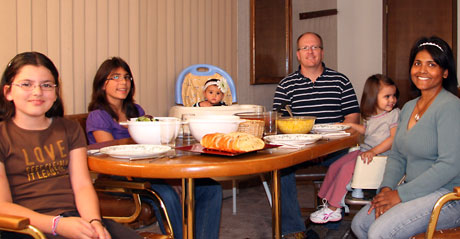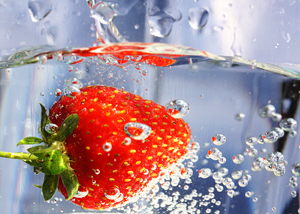Building off the back to school theme of my last healthy tips list, here are some more tips for getting your school year off to a healthy start!
- Team Up! Make a meal together instead of hitting up the drive through together. Teach your children about farm to table so they build a healthier relationship with food. It gives food greater meaning than an endless on demand supply that is available at the grocery store. These foods are also healthier as you control what goes into the food. It is an easy way to edge out excessive fat, saturated fat, trans fats, sodium, and calories in the diet.

- Family Meals! A study published by the Archives of Family Medicine showed an increased frequency of family dinners is associated with higher intake of fiber, calcium, folate, iron, vitamins B6, B12, C, and E among older children and adolescents. The study also showed that a lower glycemic load and lower intake of saturated fat and trans fats was observed in comparison to those who did not consume family meals regularly. The study concluded that dinners enjoyed together as a family led to healthy eating patterns, more fruits and vegetables, less fried food and fewer sugary soft drinks (1). Another study published in the Journal of the American Dietetic Association (JADA) supported these facts in addition to finding that increased frequency of family meals led to more breakfast meals, which is a meal associated with lower body weight (2). Finally, family meals are correlated to improved psychosocial development and regular eating habits (3) as well as a decrease in dangerous habits including tobacco, alcohol, and such drugs as marijuana and increased cognitive performance and improved grades (4). Plus, you get to enjoy time with your family and remain involved in their busy lives!

- Avoid portion distortion! The plates of Americans have grown about 36%, portion sizes at restaurants has grown up to 50%, and serving sizes in packages have grown up to 40%.(5, 6, 7) As we’ve all experienced, the more we are served the more likely we are to overeat! Try to focus on healthy serving sizes when packing your child’s lunch or making dinner. Even look into something like a Bento Box to pack a well rounded meal with portion control.

- Get Moving! Take the dogs on a walk after dinner or ride your bike with your child to school. Children need 60 minutes of moderate to vigorous physical activity every day and it can be broken down into 15 minute increments. Physical activity as a child not only helps maintain a healthy body weight and prevent chronic disease, it also instills in your child a love for being physically active, aids in bone growth, and gives your child an opportunity to learn teamwork through sports, social skills, and also how to win and lose. Healthy for the mind and body!

- Drink to your health! When packing a drink in your child’s lunch or serving them during dinner try to stick to zero or low calorie options and or low fat milk. While the Institute of Medicine recommends that men and women should consume about thirteen and nine 8 oz glasses of water a day respectively, children need about six eight-ounce glasses of water per day to stay hydrated. And just like adults, that number will increase with physical activity and hot weather! Add about 8 oz to your child’s intake for every half hour of strenuous activity they participate in. If your child is fussy about water try adding pieces of frozen fruit to the water, ice cubes that are in fun shapes, try using colorful water bottles or cups or even dilute 100% fruit juice. Sports drinks can also be a good option if your child is very active.
Want to share these tips with your friends and family? Use the buttons at the top of this blog post!
References:
1.) Gillman M, Rifas-Shiman S, Frazier L, Rockett H, Camargo C, Field A, Berkey C, Colditz G. Family Dinner and Diet Quality Among Older Children and Adolescents, Arch Fam Med. 2000; 9:235-240.
2.) Larson N, Neumark-Sztainer D, Hannan P, Story M. Family Meals during Adolescence Are Associated with Higher Diet Quality and Healthful Meal Patterns during Young Adulthood. J Am Diet Assoc. 2007; 107:1502-1510.
3.) Neumark-Sztainer D, Hannan PJ, Story M, Croll J, Perry C. Family Meal Patterns: Associations with socidoemographic characteristics and improved dietary intake among adolescents. J Am Diet Assoc. 2003; 103:317-322.
4.) Traveras EM, Rifas-Shmin SL, Berkey CS, Rocket HR, Field AE, Frazier AL, Coldits GA, Gillman MW. Family dinner and adolescent overweight. Obes Res. 2005;13:900-906.
5.) Wansink B. Mindless Eating: Why We Eat More Than We Think. NewYork, NY: Bantam Dell; 2006.
6.) Rolls BJ. The supersizing of America: Portion size and the obesity epidemic. Nutr Today. 2003;38:42-53
7.) 11. Wansink B. Can package size accelerate usage volume? J Marketing. 1996;60:1-14
Strawberry in water photo credit: massdistraction via photo pin cc



